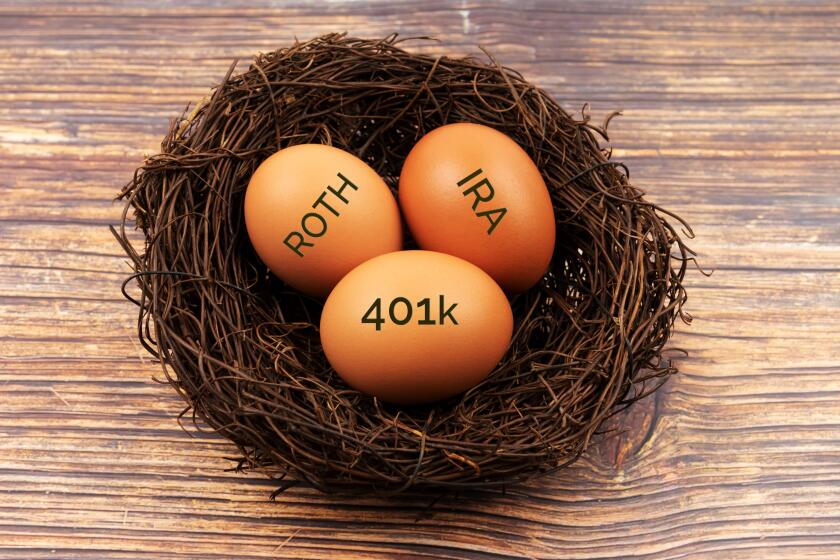Avon Products to Sell Unit, Buy Back Stock : Part of Plan to Focus on Consumer Products and Expand Health-Care Services Business
- Share via
Avon Products said Thursday that it intends to sell its Mallinckrodt medical products and chemicals division, buy back up to 25% of its stock and pay off some of its short- and long-term debt as part of a restructuring program begun last year.
“The divestiture is part of Avon’s strategy to concentrate on consumer products and to continue to expand its health-care services business,” Hicks Waldron, chairman and chief executive of New York-based Avon, said in a statement.
The St. Louis-based Mallinckrodt division, which markets medical products rather than the health-care services that Avon now favors, “is a great company, but it just doesn’t fit with Avon’s strategic direction,” Waldron said.
Wall Street Reacts Favorably
Analysts hailed the planned sale as an obvious and important step in Avon’s restructuring but were divided over how successful the program has been.
Wall Street also reacted favorably, as the price of Avon’s stock rose $2.125 per share to close at $22.375 on the New York Stock Exchange. Avon’s stock was the third most actively traded issue on the Big Board with 2.05 million shares changing hands.
The Mallinckrodt division, which also markets specialty chemicals, flavors, fragrances and cosmetic chemicals, had an operating profit of $81.9 million in 1984 on sales of $540.6 million. Operating profits for the first half of 1985 rose 13% and sales were up 4% from the same period of 1984.
Avon spokesman John Cox declined to say what price the company expects Mallinckrodt to fetch. Avon paid $715 million in stock and cash for the division in 1982. Avon expects to find a buyer by the end of the year, he said.
Buy Back 20 Million Shares
Cox also declined to reveal how much of Avon’s $636.9 million in short- and long-term debt the company intends to pay off with part of the proceeds of the sale.
Avon will buy back up to 20 million of its nearly 80 million shares outstanding, possibly starting before Mallinckrodt is sold, Cox said. The final size of the stock repurchase and the price will be determined by market conditions, he said.
Avon is buying back the stock because “we think it’s a good investment,” Cox said. “The other thing is, when we bought Mallinckrodt we issued some stock . . . and it really makes sense to buy back some stock.”
After suffering four years of declining earnings and a downturn in its door-to-door domestic beauty business, Avon began a restructuring in 1984 as part of its search for better growth and businesses with higher returns.
Avon sold its Tiffany & Co. unit to the division’s management, bought two small health-care firms and acquired Foster Medical, a leader in the home health-care field. Avon also bought back 6.5 million shares of its common stock.
Avon Chief Executive Waldron said in early 1985 that Avon’s most urgent need was to improve its domestic beauty business, which suffered from weakness in the overall direct-selling industry and from a reduced sales force. Avon revamped its selling system by focusing on marketing and product quality while retaining the door-to-door sales force.
However, Waldron said at the time that Avon would review its $2-per-share annual dividend rate at the end of the third quarter if the company can’t meet its strategic goals.
Cox declined to say how the domestic beauty business is progressing or what management plans to do about the dividend. Avon doesn’t plan to sell any more businesses and expects to buy another health-care firm this year or next, Cox said.
‘Obvious Step’
Analyst Nancy Hall of Prudential-Bache Securities said that the Mallinckrodt sale is “a very obvious step for Avon to take” that will relieve some of the pressure on Avon’s dividend.
“We continue to believe that the dividend is safe and that the strategy (to redeploy assets) is working,” she said.
Hall predicted that Avon’s 1985 per-share earnings will match the 1984 level of $2.16.
“The domestic beauty business is shaping up a little slower than expected, which is why you’re going to see relatively flat earnings in 1985,” she said.
But Emma Hill, an analyst with Wertheim & Co., noted that Avon’s beauty products sales force remains below previous highs despite a recent increase, “which looks to me like they’re off their goals and the future of the dividend is still in doubt.”
More to Read
Inside the business of entertainment
The Wide Shot brings you news, analysis and insights on everything from streaming wars to production — and what it all means for the future.
You may occasionally receive promotional content from the Los Angeles Times.









